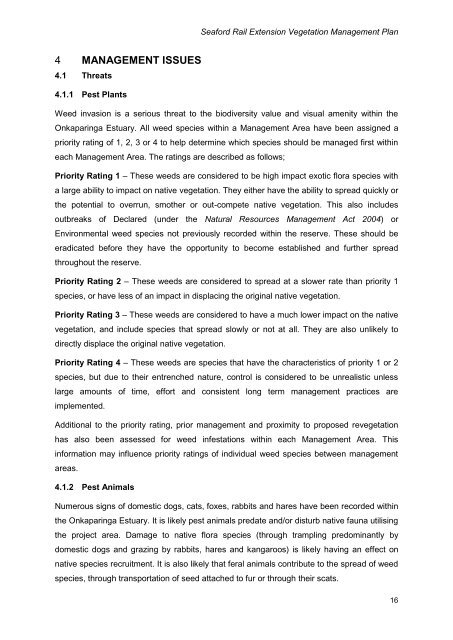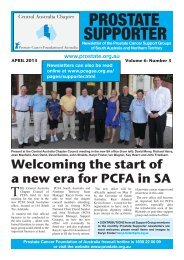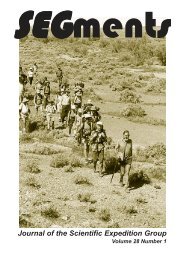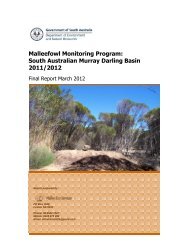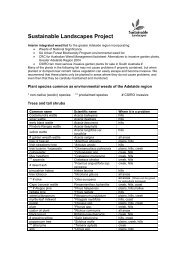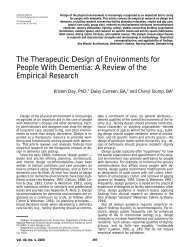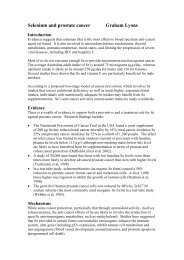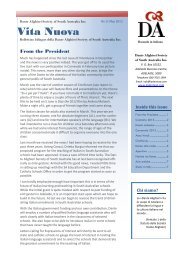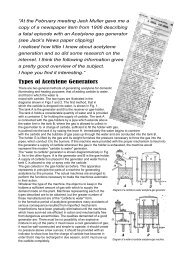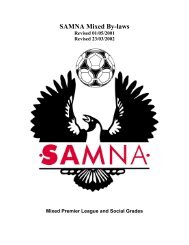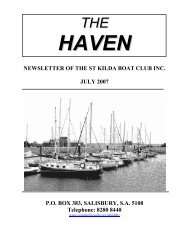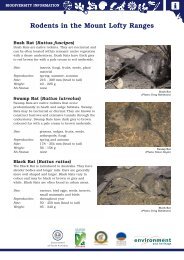Seaford Rail Vegetation Management Plan - Communitywebs.org
Seaford Rail Vegetation Management Plan - Communitywebs.org
Seaford Rail Vegetation Management Plan - Communitywebs.org
You also want an ePaper? Increase the reach of your titles
YUMPU automatically turns print PDFs into web optimized ePapers that Google loves.
<strong>Seaford</strong> <strong>Rail</strong> Extension <strong>Vegetation</strong> <strong>Management</strong> <strong>Plan</strong><br />
4 MANAGEMENT ISSUES<br />
4.1 Threats<br />
4.1.1 Pest <strong>Plan</strong>ts<br />
Weed invasion is a serious threat to the biodiversity value and visual amenity within the<br />
Onkaparinga Estuary. All weed species within a <strong>Management</strong> Area have been assigned a<br />
priority rating of 1, 2, 3 or 4 to help determine which species should be managed first within<br />
each <strong>Management</strong> Area. The ratings are described as follows;<br />
Priority Rating 1 – These weeds are considered to be high impact exotic flora species with<br />
a large ability to impact on native vegetation. They either have the ability to spread quickly or<br />
the potential to overrun, smother or out-compete native vegetation. This also includes<br />
outbreaks of Declared (under the Natural Resources <strong>Management</strong> Act 2004) or<br />
Environmental weed species not previously recorded within the reserve. These should be<br />
eradicated before they have the opportunity to become established and further spread<br />
throughout the reserve.<br />
Priority Rating 2 – These weeds are considered to spread at a slower rate than priority 1<br />
species, or have less of an impact in displacing the original native vegetation.<br />
Priority Rating 3 – These weeds are considered to have a much lower impact on the native<br />
vegetation, and include species that spread slowly or not at all. They are also unlikely to<br />
directly displace the original native vegetation.<br />
Priority Rating 4 – These weeds are species that have the characteristics of priority 1 or 2<br />
species, but due to their entrenched nature, control is considered to be unrealistic unless<br />
large amounts of time, effort and consistent long term management practices are<br />
implemented.<br />
Additional to the priority rating, prior management and proximity to proposed revegetation<br />
has also been assessed for weed infestations within each <strong>Management</strong> Area. This<br />
information may influence priority ratings of individual weed species between management<br />
areas.<br />
4.1.2 Pest Animals<br />
Numerous signs of domestic dogs, cats, foxes, rabbits and hares have been recorded within<br />
the Onkaparinga Estuary. It is likely pest animals predate and/or disturb native fauna utilising<br />
the project area. Damage to native flora species (through trampling predominantly by<br />
domestic dogs and grazing by rabbits, hares and kangaroos) is likely having an effect on<br />
native species recruitment. It is also likely that feral animals contribute to the spread of weed<br />
species, through transportation of seed attached to fur or through their scats.<br />
16


